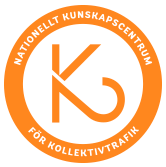Transport energy conservation research in urban transport systems dates back principally to the Organization of the Petroleum Exporting Countries’ (OPEC) “Arab Oil Embargo” (1973–1974) and the Iranian revolution (1979), when global oil supplies became threatened and costs rose steeply. Two subsequent Gulf Wars (1991 and 2003) highlighted the dangerous geo-political dimensions of Middle-Eastern oil. In latter times, the urgency to reduce global CO2 output to avoid catastrophic climate change has achieved great prominence. How to reduce passenger transport energy use therefore remains an important goal, which this paper pursues in ten Swedish cities, based on five scenarios:
(1) increasing the relatively low public transport (PT) seat occupancy in each Swedish city to average European levels (buses 35%, light rail 48%, metro 60% and suburban rail 35%);
2) doubling existing PT seat occupancy in each Swedish city;
3) increasing existing car occupancy in each Swedish city by 10%;
(4) decreasing existing energy use per car vehicle kilometer by 15%;
(5) increasing existing modal split for daily trips by non-motorized modes to 50% in each city.
A sixth “best-case scenario” is also explored by simultaneously combining scenarios 2 to 5. The data used in the paper come from systematic empirical research on each of the ten Swedish cities.
